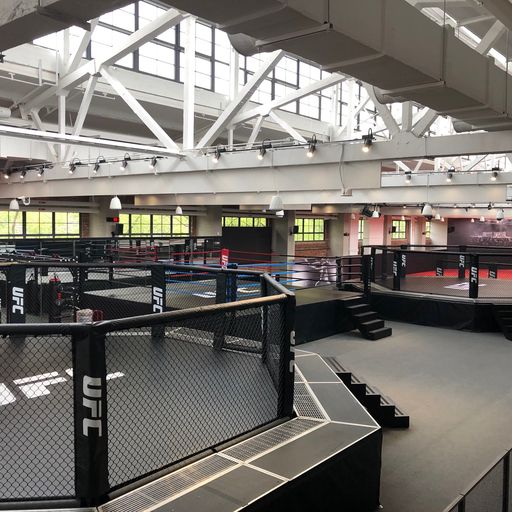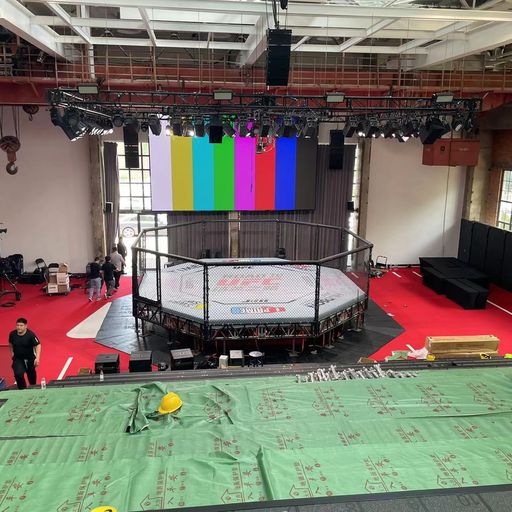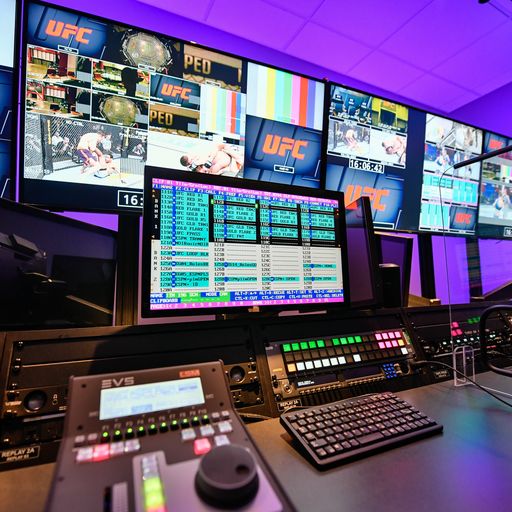UFC Charts REMI Roadmap With Road to UFC Season 2 Opener From Shanghai
Entire broadcast will be produced from UFC facility in Las Vegas
Story Highlights
UFC launches a new chapter in its broadcast playbook this weekend with the Road to UFC Season 2 opening round, the first event to be broadcast live from its UFC Performance Institute Shanghai. The two days of broadcasts from the world’s largest, state-of-the-art MMA training and development facility will be a REMI production handled by a crew and control room located at the UFC Apex facility in Las Vegas.
“Unlike other major-league sports,” says Tim O’Toole, SVP, event production, UFC, “the UFC produces their own events. We’re not only the promoter and the league; we’re also the broadcaster. As a result, we have to travel the majority of our crew to all the events, international or domestic. Road to UFC is the first attempt at a true REMI model for us. We are looking to establish a foundation for how we can produce our international shows in the future and then create a blueprint for a lot of our international events.”
Split Footprint: Fights at PI Shanghai, Broadcast Ops at Shanghai Media Tech
Opened in 2019, UFC’s 93,000-sq.-ft. Performance Institute Shanghai is nearly three times larger than the original UFC Performance Institute in Las Vegas. PI Shanghai serves as UFC’s headquarters in Asia (which it moved from Singapore) and as a hub to develop and support the next generation of MMA athletes from China and the greater Asia-Pacific region.

UFC opened its 93,000-sq.-ft. training and development center at Performance Institute Shanghai in 2019.
To erect PI Shanghai, UFC took over a massive factory and built training facilities and office space from scratch across 3½ floors. However, the facility has no broadcast infrastructure, except for dark-fiber connectivity.
To produce this weekend’s broadcasts, UFC is using a nearby broadcast facility operated by Shanghai Media Tech (a division of Shanghai Media Group). The UFC production team will deploy its typical camera complement for an event of this size: 12 broadcast cameras surrounding the octagon (either handheld or lock-offs), two Sony FR7 PTZs shooting back at the coaches in their corners, and one backstage camera.
UFC’s REMI Model: From Shanghai to Vegas and Back
All camera/audio feeds are fed into a Riedel MediorNet MicroN signal-transport system and sent to Shanghai Media tech via dark fiber. From there, UFC will connect to a Telstra fiber transmission network installed at Shanghai Media Tech and send all feeds to UFC Apex Vegas, which also has Telstra transmission fiber installed. A total of 24 sources are going from Shanghai to Vegas, with eight return sources from Vegas to Shanghai.
Except for camera ops, audio engineers, a handful of technical staff, and the front-of-house production team, the production crew will be in Vegas, producing the broadcasts from a control room at the UFC Apex facility.
“This gives us the opportunity to utilize that crew but not travel them all the way to Shanghai,” says O’Toole. “We believe this is the model for how we produce our international shows in the future. I can’t say we’re going to do them all as REMIs moving forward, but we’ll certainly take lessons learned from this and apply them for future UFC events.”
Key Pieces of the Transmission Puzzle: Telstra, PSSI, Appear, Nextologies
In addition to Telstra, UFC works closely with longtime transmission partner PSSI Global Services on contribution backhaul for its high-capacity REMI productions. PSSI has deployed Appear’s X Platform, which will be configured to perform high-density HEVC encoding/decoding for the Shanghai event.
X Platform offers the ability to blend formats — HEVC/AVC, ST2110, JPEG XS, Zixi, and now high-capacity SRT — with an array of processing, Network Address Translation (NAT), and firewall functions. X Platform includes Appear’s ECx110 modules for HEVC ultra-low-latency encoding and decoding.
“PSSI have been tremendous partners over the years,” says O’Toole. “I would say that the transmission component is the most stable part of a UFC event, and that is credit to the team at PSSI. I can’t say enough about their engineers and project managers. We have a very intricate, dynamic, and complex show that requires a lot of distribution worldwide. Thankfully, the plan that PSSI puts forth is of the utmost quality and is the most stable of everything that we do on a UFC event.”
UFC is also leveraging Nextologies hardware to deliver feeds from six reference POV cameras from Shanghai to Apex for the commentary and production teams.
UFC has also created a “data tunnel” using Nextologies for comms between Shanghai and Vegas. UFC uses Unity Intercom software to connect the respective RTS intercom systems in Shanghai and Vegas. In addition, roughly 25 Riedel Bolero wireless intercom beltpacks are deployed onsite at PI Shanghai for camera operators, stage managers, and other crew. Their signals are converted into Dante audio feeds and transferred between the two locations over the data tunnel provided by Nextologies.
Plans Postponed: PI Shanghai Makes Its Long-Awaited Broadcast Debut
This weekend’s broadcast is more than three years in the making. When PI Shanghai launched in 2019, UFC announced plans to deliver its first broadcast during the first half of 2020. The pandemic, of course, waylaid those plans.
Although O’Toole and company have tested this REMI workflow during recent UFC events in Rio de Janeiro and Perth, Australia, this weekend will mark the first time it is used to produce and deliver the actual broadcast.
“We were just doing testing in the background on those prior two events,” O’Toole notes, “but we are actually executing the event in Shanghai using this model, so there’s a lot more at stake. We’ve had tremendous help from our amazing crew and staff engineers, and we have worked very hard to put together a solid plan. We’re excited to put this to work for the very first time, and we have 100% confidence in the technique, the technology, and the plan that we have put forth.”



